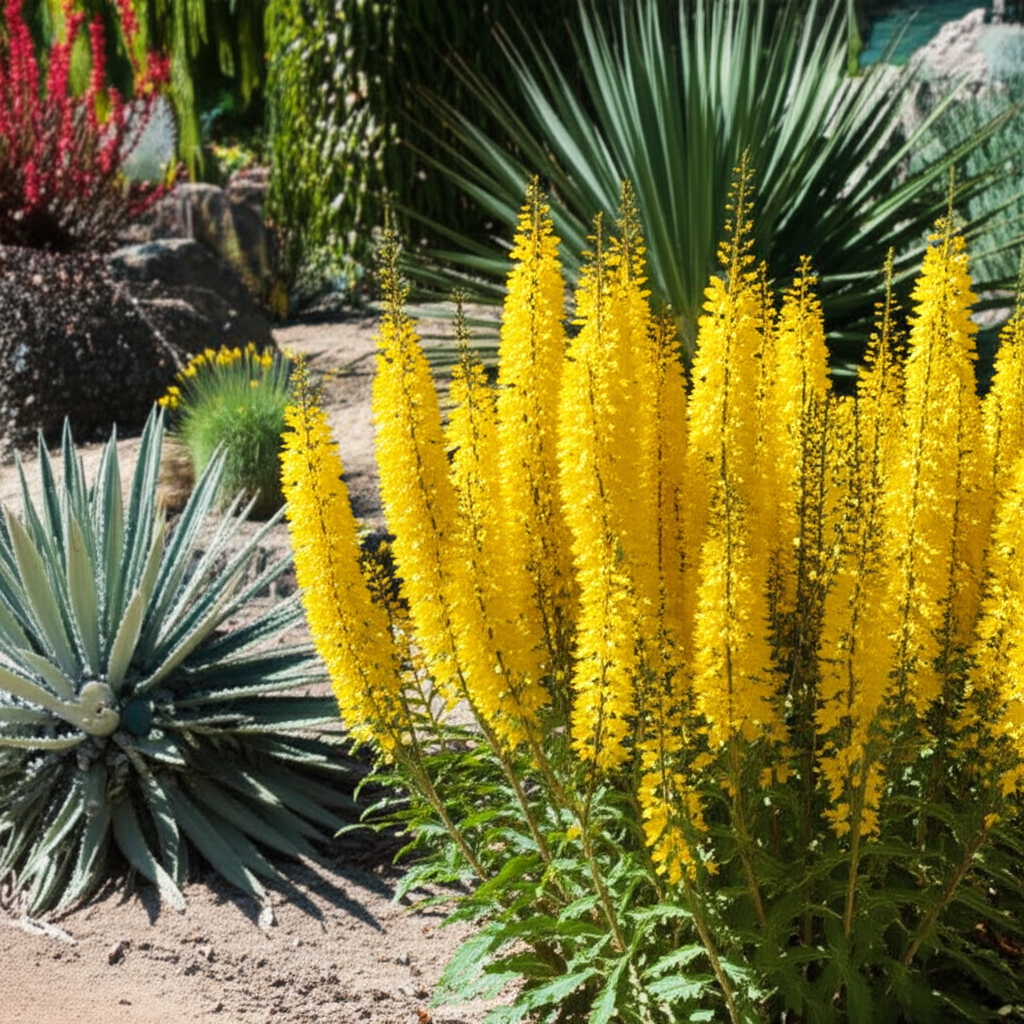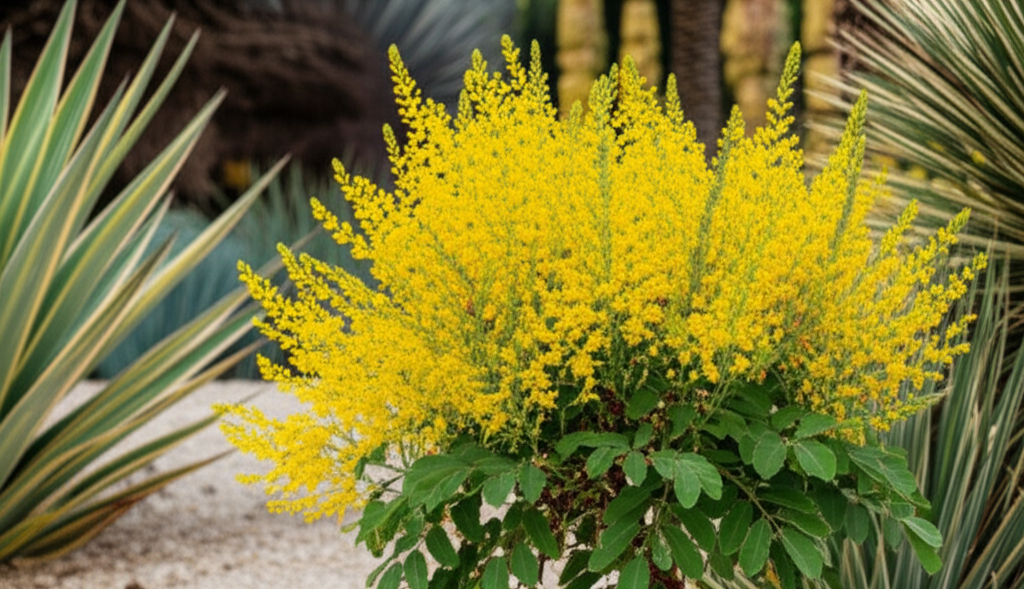Candle Bush and Drought Tolerant Gardening: A Striking Combination

Have you ever looked at a parched garden bed and wondered if there was a plant that could not only survive but truly thrive in those challenging conditions? The answer might be closer than you think, often found in the vibrant, almost fiery blooms of the Candle Bush. But can this show-stopping plant truly be a cornerstone of your drought-tolerant gardening strategy? Understanding the unique characteristics of the Candle Bush and its relationship with water conservation is key to unlocking its full potential and transforming your landscape into a resilient, beautiful haven, even during the driest spells.
Quick Answer Box
Yes, the Candle Bush is an excellent choice for drought-tolerant gardening. Its natural adaptations allow it to withstand periods of low water availability, making it a resilient and visually stunning option for arid or low-water landscapes.
What is Candle Bush and Why It’s Important in Gardening
The Candle Bush, scientifically known as Senna alata (though often also referred to by its former genus name Cassia), is a tropical flowering shrub renowned for its spectacular spikes of bright yellow to orange-red flowers that resemble lit candles. These cascading blooms are not just a visual delight; they are a testament to the plant’s robust nature. In the context of gardening, the Candle Bush is important because it offers a rare combination of striking ornamental value and remarkable hardiness, particularly its ability to tolerate and even flourish in dry conditions.
This plant’s significance in drought-tolerant gardening lies in its deep root system, which allows it to access moisture deeper in the soil, and its waxy leaf coating, which helps reduce water loss through transpiration. By incorporating drought-tolerant plants like the Candle Bush, gardeners can significantly reduce their water consumption, contributing to more sustainable landscaping practices, especially in regions prone to drought or with strict water restrictions. Furthermore, its vibrant blooms attract pollinators, adding ecological value to the garden while requiring less maintenance in challenging climates.
Quick Recommendations or Key Insights about Candle Bush and Drought Tolerant Gardening
Sun-Loving: Candle Bush thrives in full sun, which is often abundant in drier climates.
Well-Drained Soil is Crucial: While drought-tolerant, it detests soggy roots, making well-draining soil paramount.
Establish Before Drought: Water regularly during the first year to establish a strong root system; mature plants are far more drought-resistant.
Minimal Fertilizer: Over-fertilizing can lead to lush, water-hungry growth, undermining its drought tolerance.
Pruning for Shape & Bloom: Prune after flowering to maintain shape and encourage new blooms.
Attracts Pollinators: Its bright flowers are a magnet for bees and butterflies.
Medicinal Uses: Historically used in traditional medicine for its laxative and antifungal properties, but use with caution and professional guidance.
Detailed Breakdown of Candle Bush and Drought Tolerant Gardening
The Scientific Perspective: Adaptations for Aridity
From a botanical standpoint, the Candle Bush’s suitability for drought-tolerant gardening is rooted in several key adaptations. Its large, ovate leaves, while appearing somewhat susceptible to drying out, are often covered in a fine, downy fuzz or a slightly waxy cuticle. This layer serves a crucial purpose: it reduces water loss through transpiration by minimizing direct exposure of the stomata (the pores on leaves where gas exchange occurs) to the drying air.
The root system of Senna alata is typically extensive and deep. This allows the plant to tap into moisture reserves located further beneath the soil surface, often escaping the immediate effects of surface drying. This deep anchoring also contributes to the plant’s stability, making it less prone to toppling in windy conditions often associated with arid environments.
Furthermore, the Candle Bush is a member of the legume family (Fabaceae), which often have a symbiotic relationship with nitrogen-fixing bacteria in their root nodules. While this primarily aids in nutrient acquisition, the overall robustness and efficiency of the plant’s physiology, including its water management, are characteristic of many hardy species within this family.
Practical Applications in the Garden: Creating a Resilient Landscape
Integrating the Candle Bush into your garden for drought-tolerant purposes is a straightforward yet rewarding process. Its visual impact is undeniable, with the torch-like racemes of golden-yellow flowers creating a dramatic focal point. Consider planting it as a specimen shrub in a sunny border, or use it in mass plantings to create a vibrant, low-maintenance display that shines even when other plants are struggling.
Mediterranean-Style Gardens: The Candle Bush complements plants like lavender, rosemary, and succulents, creating a cohesive and water-wise aesthetic.
Xeriscaping: It is an ideal candidate for xeriscaping principles, where the goal is to minimize water use through thoughtful plant selection and design.
Container Gardening: Even in containers, the Candle Bush can be a stunning addition, provided the pot is large enough to accommodate its root system and the soil drains exceptionally well.
When establishing your Candle Bush, focus on providing consistent moisture for the first year. This allows it to develop a strong, deep root system. Once established, its reliance on supplemental watering will dramatically decrease. Mulching around the base of the plant with organic matter or gravel can help retain soil moisture and suppress weeds, further enhancing its drought resilience.
Common Mistakes to Avoid
Despite its hardiness, there are a few common pitfalls that can hinder the Candle Bush’s success in a drought-tolerant garden:
Overwatering: This is perhaps the most critical mistake. While establishing, a balance is needed, but once mature, the Candle Bush is susceptible to root rot if kept constantly moist. Ensure excellent drainage.
Planting in Shade: While it might survive in partial shade, its flowering will be significantly reduced, and its drought tolerance may be compromised as it strains for resources. Full sun is essential for optimal performance.
Heavy Fertilization: Applying too much nitrogen-rich fertilizer encourages rapid, leafy growth that demands more water. The Candle Bush is adapted to nutrient-poor soils and can thrive with minimal feeding.
Neglecting Establishment: Expecting a newly planted Candle Bush to be immediately drought-proof is unrealistic. It requires time and initial care to develop the root system necessary for independence.
Poor Drainage: Planting in heavy clay soil or low-lying areas where water collects will lead to root problems, even if the climate is generally dry.
Expert Tips or Pro Insights
The “Soak and Dry” Method: For established plants, adopt a “soak and dry” watering approach. Water deeply and thoroughly only when the top few inches of soil have completely dried out. This encourages deeper root growth.
Companion Planting for Resilience: Pair your Candle Bush with other drought-tolerant natives or well-adapted species that share similar watering needs and soil preferences. This creates a synergistic, low-maintenance ecosystem.
Deadheading for Continued Bloom: While not strictly necessary for drought tolerance, deadheading spent flower spikes can encourage the plant to produce more blooms rather than focusing energy on seed production, extending its visual appeal.
Mulch Wisely: Use a coarse mulch like gravel or pebbles in very arid areas. This not only conserves moisture but also helps prevent fungal diseases that can arise from excessive surface moisture, even in drought-tolerant plants.
Observe Your Plant: Pay close attention to your Candle Bush. Wilting leaves can indicate a need for water, but also check if the soil is genuinely dry. Sometimes, wilting can occur from overwatering if the roots are drowning.
Seasonal or Climate Considerations
The Candle Bush is a tropical to subtropical plant, meaning its performance is heavily influenced by climate and season.
Warm Climates (USDA Zones 9-11): In these regions, the Candle Bush is typically evergreen or semi-evergreen. It will likely bloom almost year-round with intermittent breaks, and its drought tolerance is most pronounced. Minimal watering will be required once established, primarily during extreme heatwaves.
Temperate Climates (USDA Zones 7-8): In cooler zones, the Candle Bush may be grown as an annual or may die back to the ground in winter, resprouting from the roots in spring. It will still appreciate full sun and well-drained soil. Drought tolerance will be more of a concern during the active growing season, but it will generally require more consistent watering than in warmer climates. Protection of the root ball during winter may be necessary.
Seasonal Bloom: While it can bloom intermittently, its most prolific flowering often occurs during the warmer, drier parts of the year, a testament to its drought-hardy nature. In cooler climates, the blooming period will be shorter and concentrated in the summer months.
Frost Sensitivity: Candle Bush is sensitive to frost. In areas with occasional light frost, it might recover, but prolonged or hard freezes will kill the plant. If you are in a borderline climate, consider planting it in a sheltered location or preparing for winter protection.
Buying Guide or Decision-Making Process
When choosing a Candle Bush for your drought-tolerant garden, consider these factors:
Origin and Provenance: If possible, source plants from reputable nurseries that specialize in native or well-adapted species for your region. This increases the likelihood of a healthy, robust plant.
Plant Size and Habit: Candle Bushes can grow quite large, often reaching 6-10 feet in height and width. Ensure you have adequate space for its mature size. Some cultivars may have a more compact habit.
Container Size: Look for plants in containers that are not “root-bound” (where roots are tightly circling the pot). A plant that has been grown in its current pot for a long time might struggle to establish.
Overall Health: Inspect the foliage for any signs of disease or pest infestation. Healthy green leaves (or the natural color variations of the species) are a good indicator of a strong plant.
* Local Adaptation: While the Candle Bush is generally drought-tolerant, local nurseries often carry varieties that have been specifically trialed and proven successful in your particular climate.
FAQ Section for Candle Bush and Drought Tolerant Gardening
Q1: How often should I water a newly planted Candle Bush?
A1: For the first year, water deeply whenever the top 2-3 inches of soil feel dry. This helps establish a strong root system. Once established, reduce watering significantly.
Q2: Can I grow Candle Bush in a pot if I have poor soil?
A2: Yes, but ensure the pot is large enough and uses a well-draining potting mix. Avoid heavy, water-retentive soils, even in pots.
Q3: Is Candle Bush invasive in dry climates?
A3: In many regions, particularly those with mild winters and sufficient rainfall for naturalization, it can be considered somewhat aggressive. However, in truly arid, drought-prone climates where it requires supplemental watering for establishment, its invasive potential is generally lower. Always check with local horticultural authorities for specific invasiveness concerns in your area.
Q4: What are the benefits of planting Candle Bush for drought tolerance?
A4: It significantly reduces the need for supplemental irrigation once established, conserves water resources, and provides continuous visual interest with its bright blooms, even during dry periods.
Q5: Does Candle Bush require any special soil amendments for drought tolerance?
A5: No, in fact, it prefers lean, well-drained soil. Avoid amending with rich compost or fertilizers that encourage excessive, water-thirsty growth. Grit or perlite can be added to heavy soils to improve drainage.
Conclusion for Candle Bush and Drought Tolerant Gardening
The Candle Bush stands as a testament to nature’s ingenuity, offering a brilliant solution for gardeners seeking beauty and resilience in water-wise landscapes. Its remarkable ability to thrive with minimal water, coupled with its spectacular floral display, makes it an invaluable addition to any drought-tolerant garden design. By understanding its botanical adaptations, applying proper planting and care techniques, and avoiding common pitfalls, you can harness the full potential of this stunning shrub. Embrace the Candle Bush, and transform your garden into a vibrant, sustainable oasis that celebrates the beauty of resilience, even when the skies are dry.


